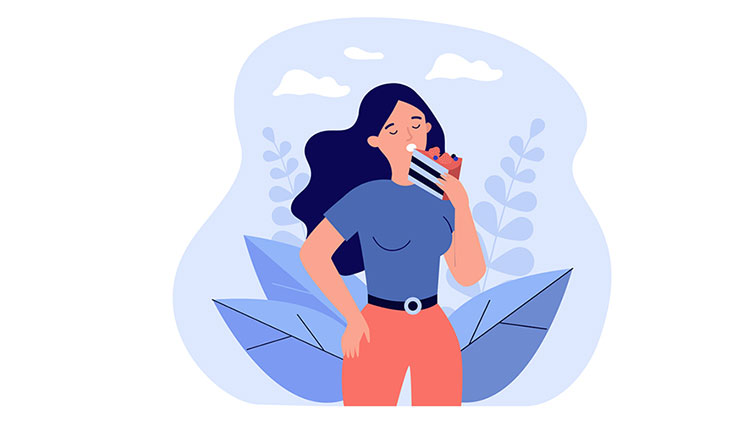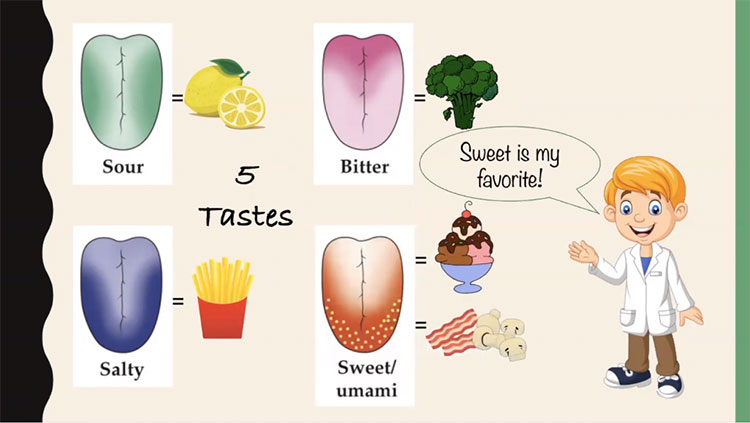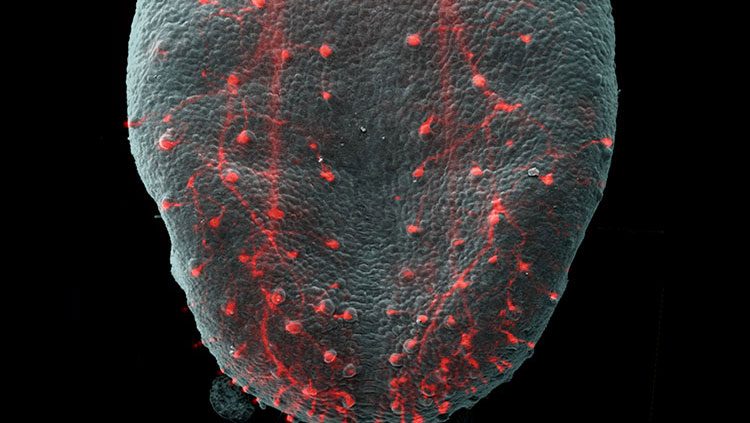The Biology of Picky Eating
- Published13 Jul 2013
- Author Emily Rose Jordan
- Source BrainFacts/SfN

Everyone knows a picky eater — a former classmate of mine ate only cereal, pasta and milk — but why does picky eating exist?
Humans are omnivores and when necessary, we can survive on a wide range of diets. The Miwok people of California traditionally subsisted on acorns, which they had to process by drying, shelling, pounding, leaching, and cooking to render edible. During the famines of the 1990s, North Koreans resorted to eating tree bark to stave off starvation. Eating is a fundamental behavior and we derive both nutrients and pleasure from it. So why are some people unable to fully enjoy many foods?
One simply has to look at what people eat around the world to find evidence that food preferences vary extensively. In Iceland, a traditional dish called hákarl is made by fermenting the meat of a poisonous shark, while in Scotland, there is a holiday devoted to haggis. We learn to savor some dishes above others, but these preferences can also become extreme and limiting, as in the case of my pasta-loving classmate.
The roots of pickiness may lie in our past. Selective eating is especially common in children, with up to 50% of children reported to be picky.1 Pickiness may have evolved to keep kids from getting sick. When children start to walk, they do not yet know which foods are safe, so avoiding unfamiliar foods can prevent the risk of poisoning as they start becoming independent.
Picky eating also benefits other species. A classic example is conditioned taste aversion in rats, first described by John Garcia and colleagues, who found that rats began to avoid sugar when it was paired with a stimulus that made them feel sick.2 Sugar is almost universally beloved by animals, but unfortunately rats do not have the ability to vomit. To avoid dying from food poisoning, rats have evolved to be picky eaters. They take a tiny taste of new foods at first, and if they feel sick afterwards, they learn to avoid the food in the future. Conditioned taste aversion can also be found in humans, such as when chemotherapy patients develop food aversions due to nausea.3
Being picky around foods that could make you sick makes evolutionary sense, but as an adventurous eater myself, I have always wondered why otherwise normal adults sometimes refuse to eat perfectly healthy and tasty foods. Unlike people with other eating disorders, adult picky eaters usually maintain normal body weights but abide by certain rules, such as refusing to eat certain colors of foods, avoiding all vegetables, or sticking to only certain brands of their preferred foods. Often picky eaters find socializing difficult because they are embarrassed to eat in front of others.
On a trip to Singapore, I got a better understanding of what picky eaters may go through. I was keen to try durian, the fruit so stinky that it is famously against the law to bring it to public places. I was surprised to find that even when smothered in whipped cream, I found it inedible. My Singaporean friend finished our shared dessert, exclaiming "It’s so rich and delicious," when all I wanted was to get the weirdly chemical taste out of my mouth. When extremely picky eaters try new foods, they seem to experience what I felt when eating durian — that whatever is in their mouth simply does not taste like food.
Picky eaters may actually sense taste differently to other people. Taste buds, which are comprised of groups of receptors on the tongue, are specialized to discern the basic tastes — sweet, salty, bitter, sour and savory — by detecting chemicals in food and relaying this information to the brain, where there are specific areas for each basic taste in a brain region called the gustatory cortex.4 Eating something salty activates one part of the gustatory cortex, while sweetness activates another, separate area.
Linda Bartoshuk, a psychologist at Yale, discovered that people who avoided strong tasting foods like alcohol and hot peppers actually have more taste buds than non-choosy people.5 These "supertasters" actually perceive tastes more intensely because their brains receive a stronger taste signal from their tongues.
Studies of Selective Eating Disorder (what some scientists are calling very picky eating) are still in their infancy (if you are a picky eater, you can participate in a research project here), but understanding why people perceive tastes in different ways may shed light on certain disorders. Autism, obsessive-compulsive disorder and anxiety commonly correlate with problematic selective eating. If scientists understand how taste buds and the gustatory regions of the brain communicate, they may be able to help people with these disorders as well as help chemotherapy patients overcome nausea, selective eaters lead more socially fulfilling lives, and maybe even help me enjoy durian.
CONTENT PROVIDED BY
BrainFacts/SfN
References
1. Mascola et al., 2010 http://www.ncbi.nlm.nih.gov/pmc/articles/PMC2943861/
2. Garcia et al., 1955 http://psycnet.apa.org/index.cfm?fa=search.displayRecord&UID=1956-02010-001
3. Mattes et al., 1987 http://www.ncbi.nlm.nih.gov/pubmed/3677112
4. Chen et al., 2011 http://www.ncbi.nlm.nih.gov/pubmed/21885776
5. Bartoshuk et al., 1995 http://www.sciencedirect.com/science/article/pii/0031938494903611
Debono, M., Ghobadi, C., Rostami-Hodjegan, A., Huatan, H., Campbell, M.J., Newell-Price, J., Darzy, K., Merke, D.P., Arlt, W., and Ross, R.J. (2009). Modified-release hydrocortisone to provide circadian cortisol profiles. The Journal of clinical endocrinology and metabolism 94, 1548-1554.
Inouye, S.T., and Kawamura, H. (1979). Persistence of circadian rhythmicity in a mammalian hypothalamic "island" containing the suprachiasmatic nucleus. Proceedings of the National Academy of Sciences of the United States of America 76, 5962-5966.


















